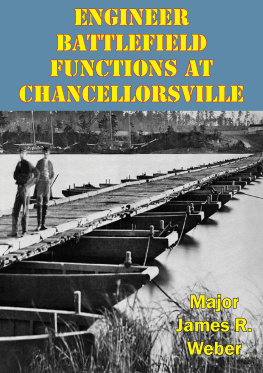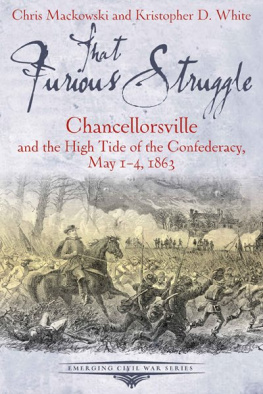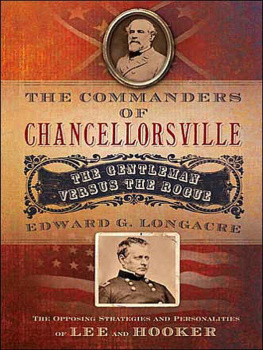This edition is published by PICKLE PARTNERS PUBLISHINGwww.picklepartnerspublishing.com
To join our mailing list for new titles or for issues with our books picklepublishing@gmail.com
Or on Facebook
Text originally published in 1995 under the same title.
Pickle Partners Publishing 2014, all rights reserved. No part of this publication may be reproduced, stored in a retrieval system or transmitted by any means, electrical, mechanical or otherwise without the written permission of the copyright holder.
Publishers Note
Although in most cases we have retained the Authors original spelling and grammar to authentically reproduce the work of the Author and the original intent of such material, some additional notes and clarifications have been added for the modern readers benefit.
We have also made every effort to include all maps and illustrations of the original edition the limitations of formatting do not allow of including larger maps, we will upload as many of these maps as possible.
ENGINEER BATTLEFIELD FUNCTIONS AT CHANCELLORSVILLE
By
MAJ James R. Weber, USA
TABLE OF CONTENTS
Contents
ABSTRACT
This study investigates the significant effect of mobility, counter-mobility, survivability, and topographic engineering on the American Civil War Campaign of Chancellorsville. The operations occurred near Fredericksburg, Virginia, in April and May of 1863. In the battle, the Confederate Army of Northern Virginia decisively defeated the Union Army of the Potomac. Engineer-related considerations contributed immensely to the Confederate victory.
Engineer battlefield functions influenced the operations of both armies. The Union Engineer Brigade constructed numerous pontoon bridges to overcome the river obstacles prior to and following the battle. This capability allowed the Union Army to initially surprise and envelop the Confederate Army. The natural obstacles of the rivers and forests and manmade obstacles of abatis hindered maneuver. Survivability was a significant factor during the fighting. At Chancellorsville, the Confederates used entrenchments for the first time in open operations. This strengthened their economy of force in front of the Union Army and gave Stonewall Jackson mass during his successful enveloping attack. Finally, topographic engineering was important through map production and reconnaissance by engineers.
This study concludes that the Confederate Army integrated the engineer battlefield functions more effectively than the Union Army. In part, this explains the decisive Confederate victory.
CHAPTER ONE INTRODUCTION
Engineer battlefield functions significantly affected the American Civil War campaign of Chancellorsville. Mobility, counter-mobility, survivability, and topographic engineering influenced the strategy and tactics of both sides. The more effective application of these by the Confederate Army of Northern Virginia contributed to its success over the Union Army of the Potomac.
Armies throughout history, and the United States Army today, frequently underestimate the importance of engineer-related activities to synchronization on the battlefield. This thesis seeks to answer the question: How important were the engineer battlefield functions of mobility, counter-mobility, survivability, and topographic engineering to operations during the Chancellorsville Campaign?
The Battle of Chancellorsville occurred from May 1 through 4, 1863. It was a decisive victory for the Confederate Army of Northern Virginia under General Robert E. Lee. Following the battle, the Union Army of the Potomac, commanded by Major General Joseph Hooker, retreated back to the north side of the Rappahannock River and conceded the initiative to the Confederates. Only six weeks later the Southerners began the advance north into Maryland and Pennsylvania that ultimately resulted in the Battle of Gettysburg.
At the start of the Chancellorsville Campaign, the Union and Confederate forces occupied opposite sides of the Rappahannock River near Fredericksburg, Virginia. The armies held these lines since the conclusion of the Battle of Fredericksburg, also a Confederate victory, which occurred the previous December.
At the time of the Battle of Fredericksburg, Major General Ambrose E. Burnside commanded the Union Army. He wanted to drive toward Richmond, Virginia. The high command of the Union Army believed early in the war that the capture of the Confederate capital would be decisive in ending the conflict. Because Richmond was the seat of government, the Union generals believed it was the center of gravity for the Confederacy. The route through Fredericksburg was the shortest way to this Confederate city. Burnside did not originally intend to conduct an opposed river crossing followed by a frontal attack against a prepared defense.
The majority of the Confederate Army had been located further to the west of Fredericksburg when Burnside conceived the plan. However, the Union Army did not cross the Rappahannock River fast enough. The late arrival of the pontoon train contributed to the delay. The extra time allowed the Confederates to react. General Robert E. Lee, the commander of the Army of Northern Virginia, shifted forces into and around Fredericksburg. Lees soldiers defended from prepared positions at the base of and along the crest of the high ground called Maryes Heights located west of the town. During the Union Armys crossing of the Rappahannock River by pontoon bridges, Confederates fired at the engineers and infantrymen from buildings in the town. Once on the far shore, the Union infantry conducted repeated frontal assaults against the Confederate defensive works. These futile attacks failed to dislodge the defenders. After suffering serious casualties, the Federals retreated back across the pontoon bridges.
The Battle of Fredericksburg impacted the Battle of Chancellorsville in a number of ways that are relevant to this study. The assault across the Rappahannock during Fredericksburg was one of the few opposed river crossings in the Civil War. The Union Army also experienced river crossing delays in the spring of 1863. This time, it would be measured in hours, not days. However, the problems in synchronizing a river crossing operation were still apparent. These engineer-related topics influenced the Fredericksburg Campaign and would continue to do so at Chancellorsville.
Fredericksburg also impacted the mindset of Major General Joseph Hooker. In January of 1863, President Abraham Lincoln replaced Burnside as commander of the Army of the Potomac. Hooker assumed command and began to develop a new campaign plan. As a grand division commander in charge of two corps at Fredericksburg, Hooker saw first-hand the carnage inflicted by entrenched infantrymen armed with rifles. As commander of the Union Army in the Chancellorsville Campaign, this memory would cloud his thinking.
Hooker reorganized the Army of the Potomac after assuming command, doing away with Burnsides three grand divisions. For the upcoming campaign, seven infantry corps comprised the army. The First Corps was commanded by Major General John F. Reynolds. Major General Darius N. Couch had the Second Corps. The Third Corps belonged to Major General Daniel E. Sickles. The future Commander of the Army of the Potomac at Gettysburg, Major General George G. Meade, was in charge of the Fifth Corps. The Sixth Corps was under Major General John Sedgwick. Major General Oliver O. Howards Eleventh Corps and Major General Henry W. Slocums Twelfth Corps completed the organization. Hooker also consolidated the cavalry into a single corps under Major General George Stoneman. The mounted arm was about 12,000 men strong. The total effective strength for the Army of the Potomac was over 134,000. The army possessed approximately four hundred artillery pieces. Hooker had a formidable sized force that was a more efficient organization than Burnsides in December.














